Use a Carnival of the Animals listening map and some fun Carnival of the Animals activities to bring fun and joy to your elementary music classroom. This children’s musical classic will have your students giggling, dancing and maybe even he-hawing along with the music. Click here for a Carnival of the Animals Listening Map Set. Read on for 10 fun activities to use along with it!
Who wrote Carnival of the Animals?
Camille Saint-Saens wrote Carnival of the Animals in 1886. Camille Saint-Saens was a composer famous for his programmatic music, also known as symphonic poems. He was a French composer who lived from 1835-1921.
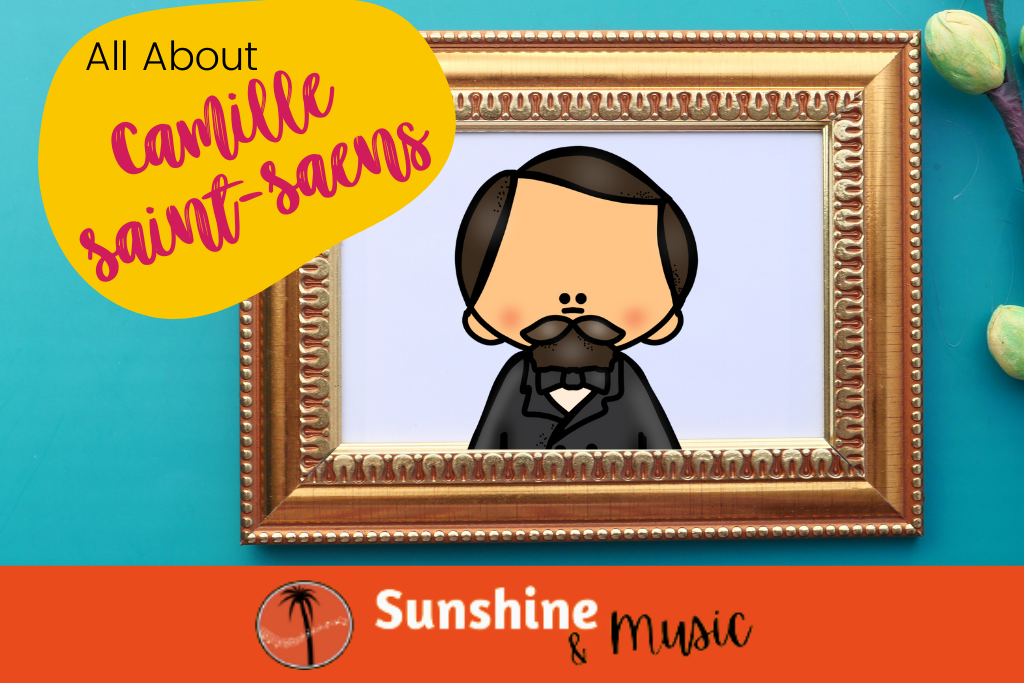
What is the Story Behind Carnival of the Animals?
The Carnival of the Animals was written for Saint-Saens’ own amusement. He never intended it to be listened to by the public. It was a light and humorous set of short pieces, and he wanted to be known for his serious works. Afraid that it would tarnish his professional reputation, Saint-Saens only ever permitted one movement from Carnival of the Animals to be publicly played during his lifetime – The Swan movement.
Carnival of the Animals Lesson Plans
In my Carnival of the Animals lesson plans, I like to use a mix of listening, describing, coloring and, of course, movement. The Carnival of the Animals makes a great music lesson for silly movement, but if you know me, most of the activities I do have a connection to curriculum as well. A Carnival of the Animals lesson is a great time to talk about describing music (fast or slow, long or short, etc).
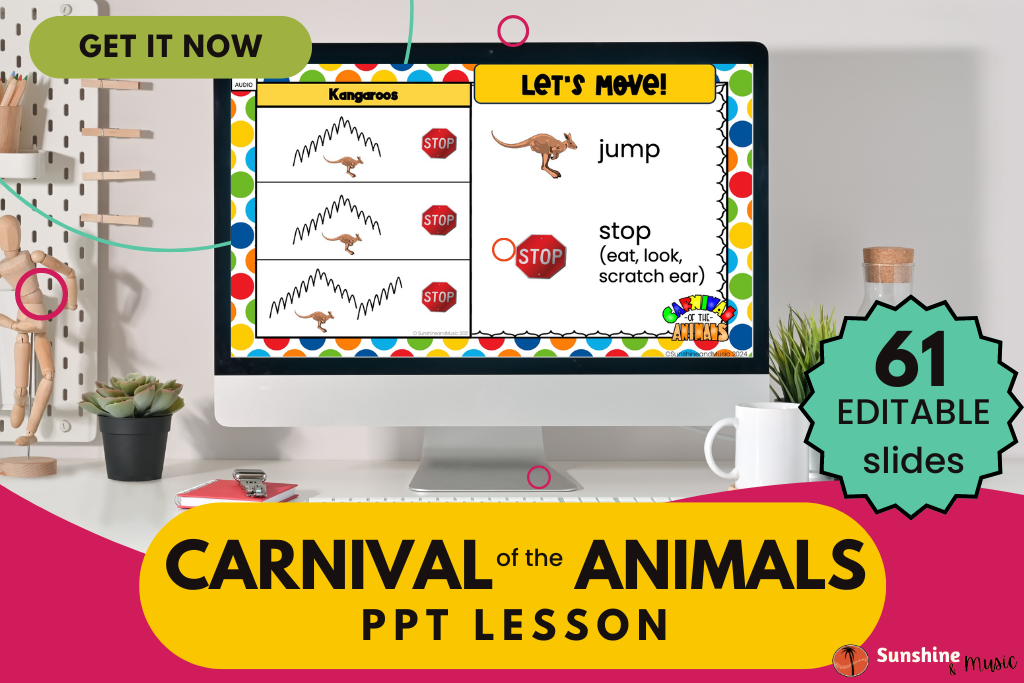
Want your own organized unit of Carnival of the Animals Lesson Plans? I have combined all the activities I teach into a set of editable PowerPoint slides. They work awesome with my Carnival of the Animals Listening Maps and Coloring Pages.
How To Use a Carnival of the Animals Listening Map
Each movement within The Carnival of the Animals is so short that I can quickly show students a listening map and have them listen along. This helps student to be familiar with the sections of the song before we start moving to it.
Check out my Carnival of the Animals Listening Map Set here if you are looking for some listening maps to go along with your lesson.
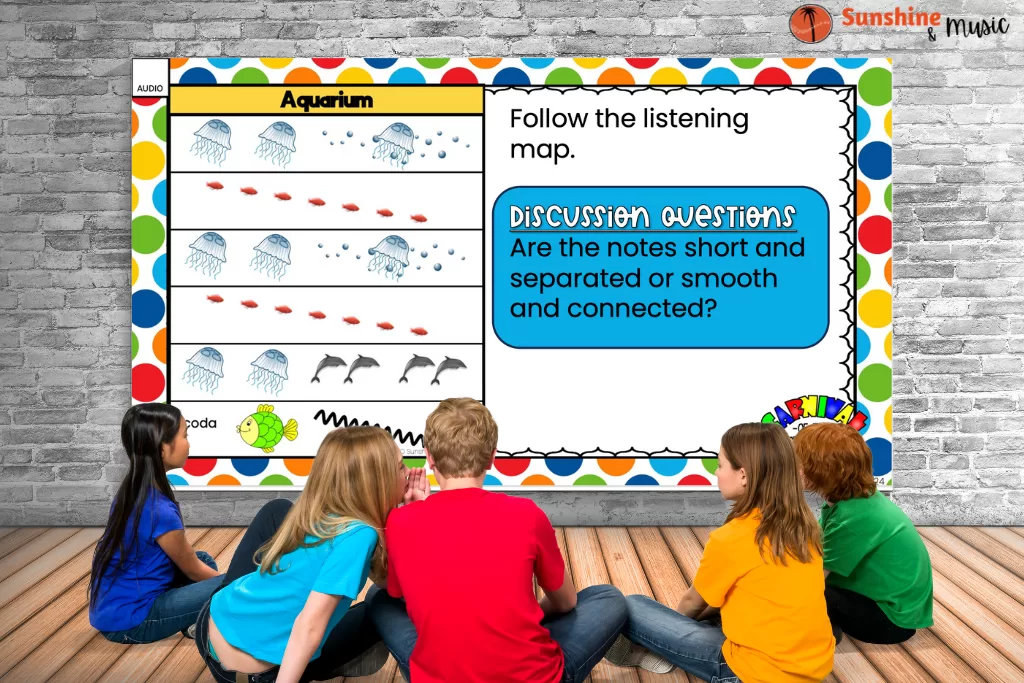
Listening Activities for Carnival of the Animals
Listening glyphs can be another way to introduce a song. Especially if you are going to focus on describing what you hear. A listening glyph is basically a coloring sheet with questions. Each question tells you how to correctly color the picture, based off what you hear.
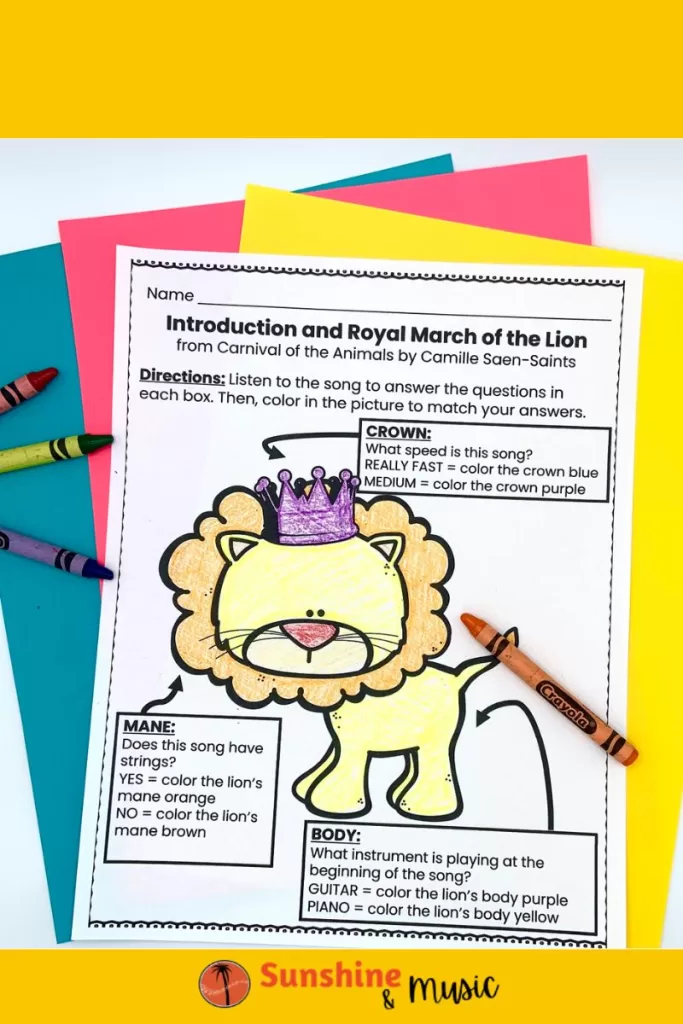
Carnival of the Animals Activities with Movement!
Now, in my humble opinion, no music lesson (especially a Carnival of the Animals music lesson) is complete without some movement. Movement is a great way for students to interact with musical ideas like fast and slow, long and short, and more.
I tend to do my lesson on Carnival of the Animals with kindergarten and first grade, and little bodies need to move. So I have created movement ideas you can do for each movement of Carnival of the Animals. Need a visual? I even demonstrate some of my favorite in a YouTube video! Scroll down to watch.
Royal March of the Lion
During the introduction, we bow to the people around us. During part A, walk around the room with a royal air. Then during part B, stand in place and silently roar, matching with the roars in the music. Then it returns to part A (royal walking), during the coda, sit where you are at and then do one final roar!
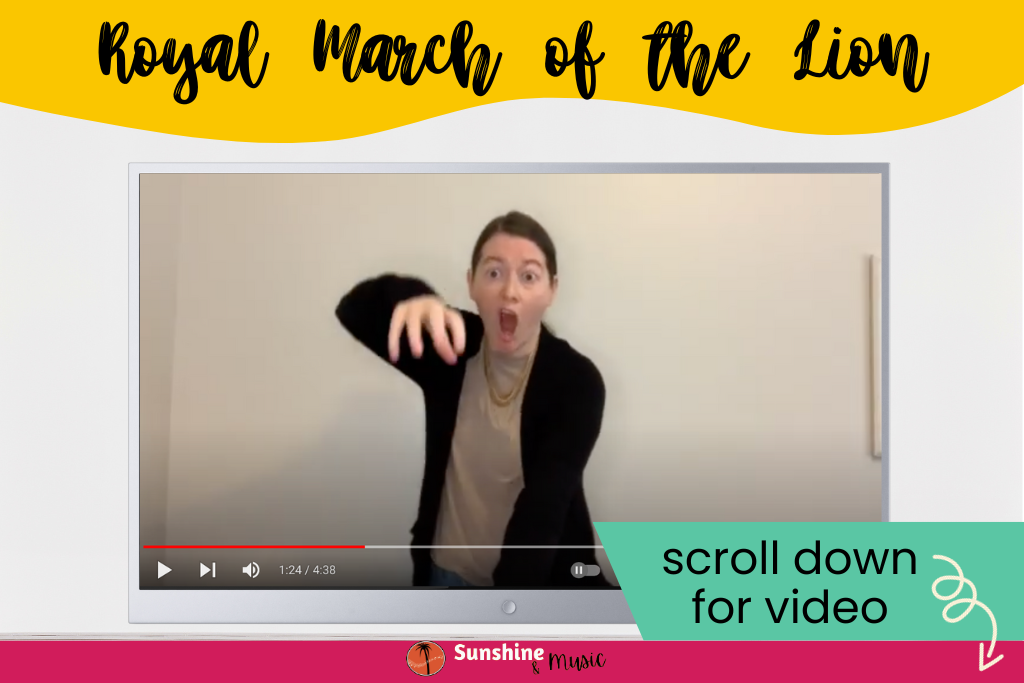
Hens and Roosters
Divide your class into boys and girls. During the hen part, the girls will peck their way around the room like chickens. When the rooster crows, the girls stop as the boys stand up and act out being a rooster.
Swift Animals
Have the students gallop around quickly.
Tortoises
The whole class pretends to be turtle can-can dancers. During the intro, slowly wave and get prepared for your can-can. When the melody comes in, act out a slow, turtle can-can.
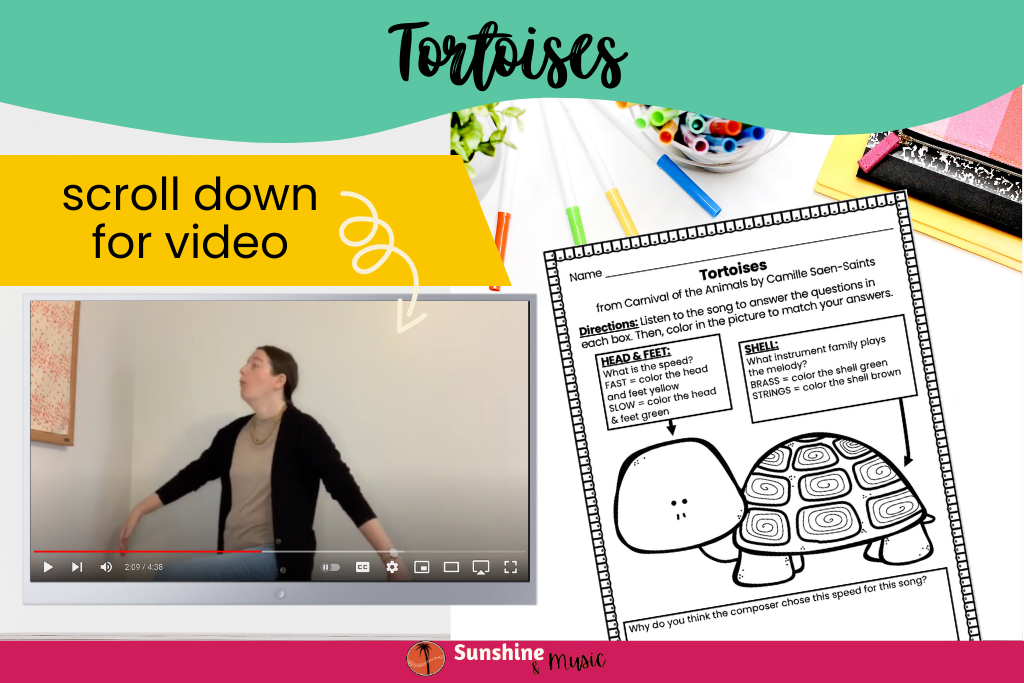
The Elephant
The class pretends to be elephant ballerinas (make sure to have your trunk – aka your arm – sticking out). Intro: do 2 plies. Part A: wave your trunk left and then right and then do a spin. Repeat. Part B: Wave your trunk left, then right, then draw a circle in front of you with your trunk. Flick your trunk low to high (matching the music) and then do a spin. That brings us back to A.
Kangaroos
This song has jumping music and stopping music. Once students have listened with the listening map and determines what the jumping and stopping music sound like, I have them pretend to be kangaroos. They jump around the room during the jumping music and they stop and look around and maybe munch on some grass during the stopping music.
Aquarium
I have students move around like an animal from the ocean. I try to guess what animals they are acting out. But you could also brainstorm animals and discuss the different ways that they move. Throughout the song, you could call out different animals and have students move like that animal.
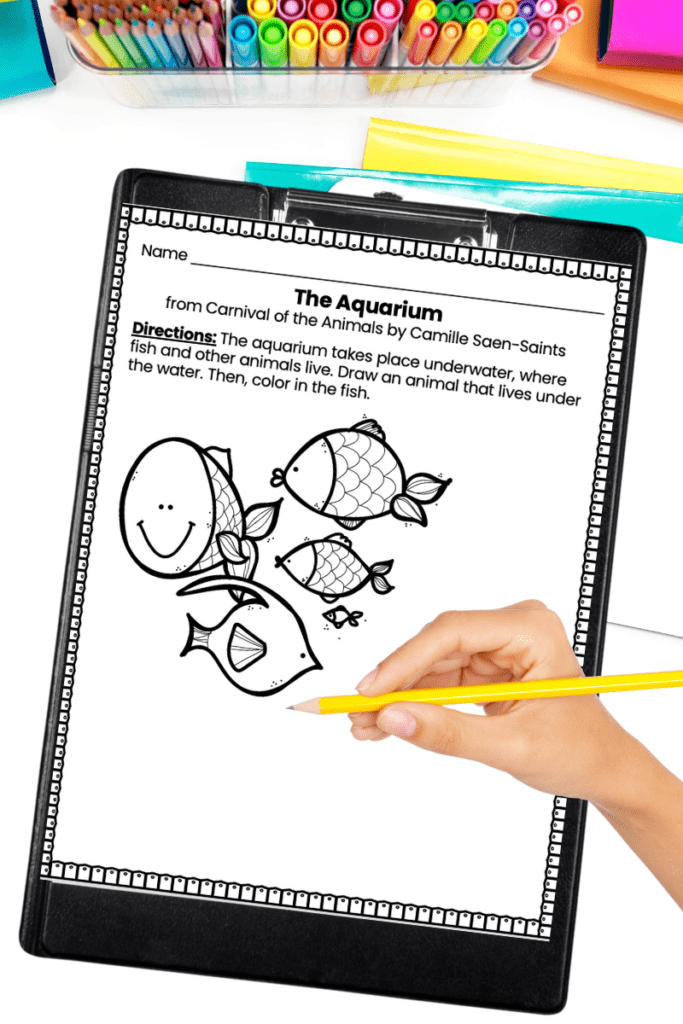
Persons With Long Ears
I simply have my students pretend to be donkeys and “hee-haw” along with the music.
Cuckoo in the Depths of the Woods
You could have students sit curled up in a ball. Every time the cuckoo calls, they can pop their head out and then tuck it back in.
Aviary
You could have flutter their hands around like birds. This could also be a fun scarf activities. Students could copy your scarf movements as you trace the line of the melody.
Pianists
Have music pointers that students can use as they look at their listening sheet. They can follow along as the music goes up and down. You could even have students stand and move their bodies up and down with the contour of the scale. Or to make it more fun, pick a body part that would go up and down (ex: key #1 – your nose goes up and down matching the melody, during scale #2 – your elbow, etc).
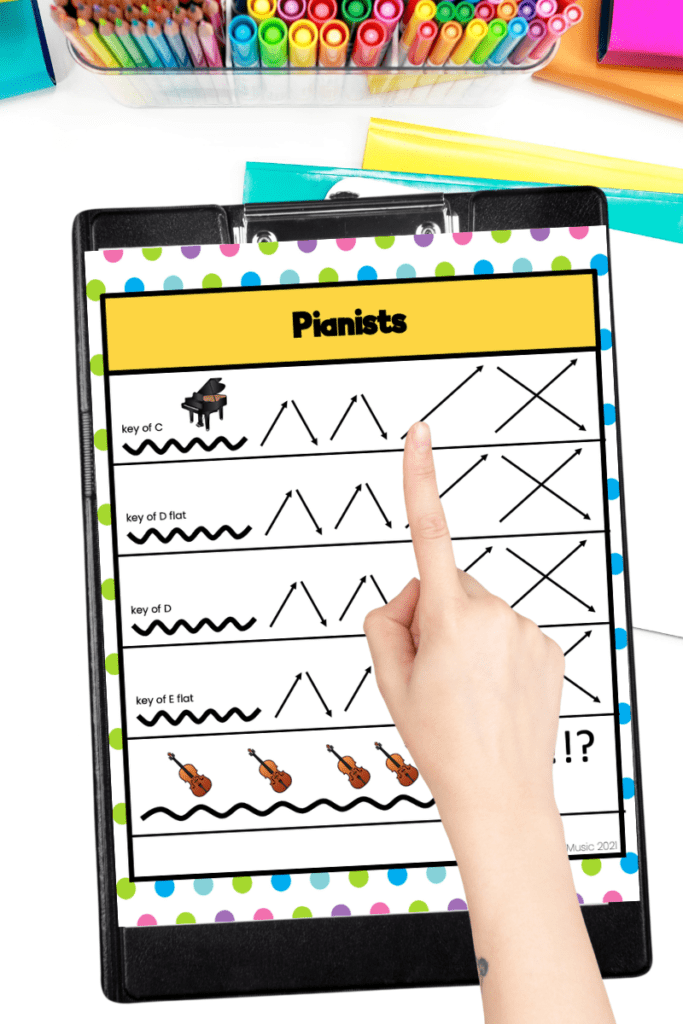
Fossils
During part A, students act out moving like a T-rex. In part B, they tip-toe like a velociraptor. During part C, they fly like a pterodactyl.
The Swan
This song is one of my absolute favorites from the piece. I think this song would a great one for mirroring. Maybe sure to use specific movements for A and B so students get a feel of the form of the piece and can notice repeated sections.
Or even simply have them close their eyes and listen without telling them to name of the movement. Have them guess which animal it is and give their reason why.
Finale
Teacher = visitor to the zoo. Each student is in their cage, acting out one of the animals we have learned about in the Carnival of the Animals. I have to guess which one they are.
As you may have noticed, I don’t have an activity for each movement. Honestly, before I started out on this project, I wasn’t even aware that all these movements existed! I’d love to hear what YOU do with Carnival of the Animals in your classroom! Please share your ideas in the comment section below.
Carnival of the Animals YouTube
Need help picturing the movements? Check out this YouTube video where I show off some of my favorites Carnival of the Animals movements!

Where Can I Find a Carnival of the Animals Lesson Plan?
I’ve curated all the Carnival of the Animals lesson plans I teach into one PowerPoint document. With listening and movement slides ready to go (plus information on the song and composer), all you will need to do is add music.

Want to edit it to make it a little more your own? No problem! Text is editable and a blank slide is included that you can use to add your own slides to supplement the lesson.
And don’t forget these helpful resources. They work together with the lesson plan slides to give you all the resources you could need for this lesson.
This Carnival of the Animals Listening Map Set is one of my best sellers. It contains listening maps for all 14 Carnival of the Animals movements. Listening maps are provided in color and b&w format. Click here for the Carnival of the Animals Listening Map Set.
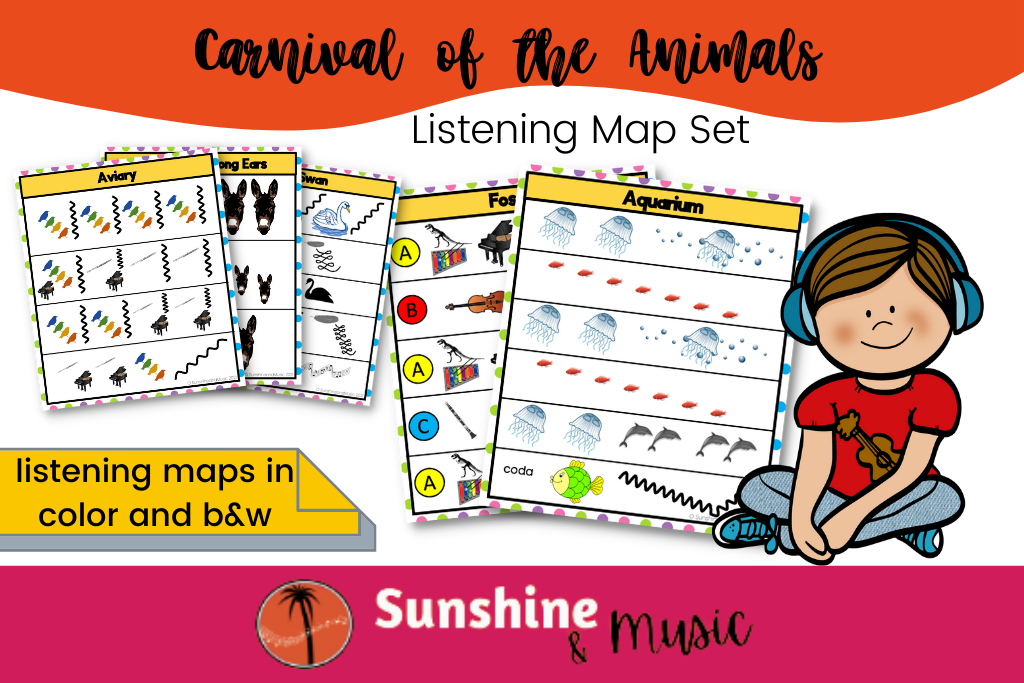
And don’t forget these Listening Activities for Carnival of the Animals to go with each movement as well! They pair great with the listening maps.

Get a great deal on all these (plus Danse Macabre lesson too!) in the Best of Camille Saint-Saens bundle ⬅️ Best value.
More Blog Posts To Read
Want more Camille Saint-Saens? Check out the Best of Camille Saint-Saens and How to Teach It.
Want to learn more about listening maps? Check out Listening Maps for Music: The Ultimate How To Guide!

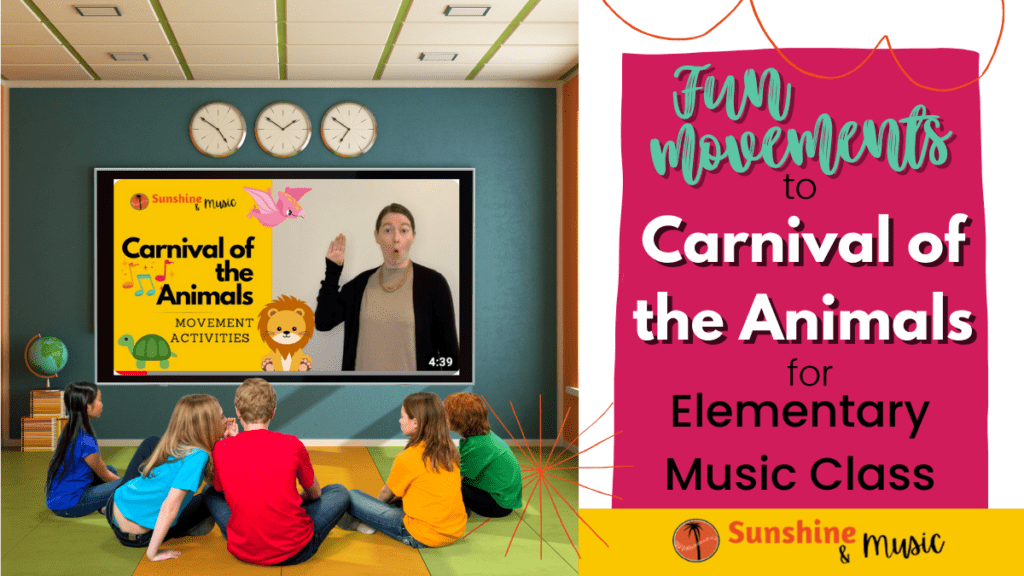






21 Responses